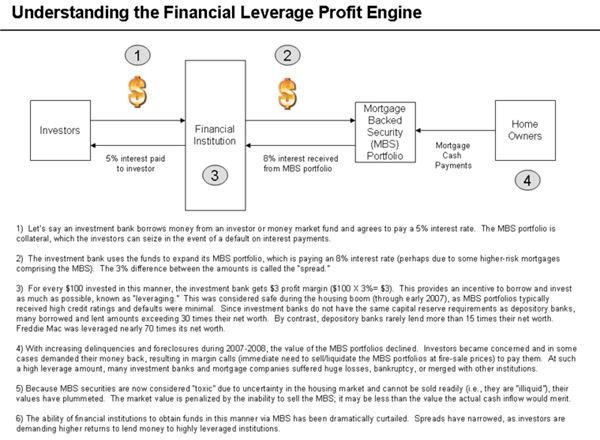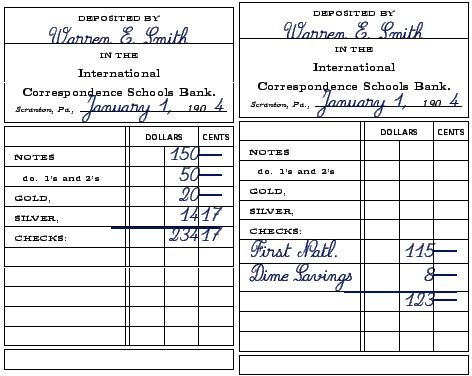Insights on How to Read a Financial Statement
Understanding the Accounting Objectives in a Business System
The first step in learning how to read a financial statement is to understand the procedures and objectives of the accounting system. In so doing, you will understand why a balance sheet is called such, when in fact it’s actually a Statement of Assets, Liabilities and Capital.
The main procedure to understand is that for every accounting transaction, there are two accounts involved in which one is debited while the other is credited. Said method keeps the book of accounts balanced and is known as the double-entry method of accounting.
In having an in-depth understanding of this process, you will comprehend that accounts are always related, hence they provide underlying information that goes beyond what is summarized in the financial statements.
The Capital Account and Its Important Aspects

A person or a group of individuals who decides to venture into a business undertaking must put up a certain amount of funds called “Capital”. Capital is a credit to the business founder, in the sense that it is being recognized as coming from one’s efforts or resources.
This fund is used to buy the furniture, fixture and equipment, to pay for advance deposits on rentals, to buy the goods for resale or raw materials used for production. These are the so-called capital expenditures, and they will be carried in the company’s books as real accounts. They form part of the company’s assets and will be debited as they increase.
Increasing the Capital Account – All amounts that will increase the value of the initial capital infused will make use of a credit entry. However, these increments are relatively few, but the most common is the net income gained from annual operations. In a corporate set-up, such increments are taken-up separately as Retained Earnings, but are added to the summary of Stockholders’ Equity or Ownership.
As increments from business operations, the most common account affected would be the Cash or the Accounts Receivables. Hence, if the capital account increases due to profits, it follows that the cash or receivable account will also increase.
If the capital account increases as a result of additional capital infusion, then cash or a form of asset is added as part of the business’s resources.
Decrease in Capital – Conversely, business operations that result in a net loss will result in a decrease in the capital of the company. The capital account of a single proprietorship will be reduced by a debit entry.
In a corporate structure, the corporation’s Retained Earnings account will be debited. The purpose of this is to reduce the accumulated earnings that are technically added to the value of the Stockholder’s Equity in a balance sheet presentation.
The original entries made before the loss is recognized are those that pertain to business expenditures. If the business operations cannot generate enough funds to recover the amount spent to fund its operations, then the funds that are actually used are capital funds and not fresh funds. If this condition continues, the capital funds of the business will likely be depleted because it will absorb most of the expenses incurred to operate the business.
Please proceed to the next page to read insights on how to read a financial statement, particularly the capital asset accounts.
How to Read the Capital Asset Accounts in the Balance Sheet
You can learn how to read a financial statement by understanding the capital asset accounts included in the balance sheet. Let us go back to the capital account, and how it provides the means to procure, construct, fabricate or set aside resources, in order to sustain “a going concern.” These items are generally substantial in amount and are expected to contribute to profit generation.
A business’s working capital is a capital asset account and is often segregated into a separate deposit classification, while some of the idle capital funds may be in securities or high-yield deposits while awaiting resolutions for dividend pay-offs. Others, however, are kept classified as reserves for future ventures.
Fixed assets are generally treated as properties owned by the business, and any increase or additional procurements make use of debit entries. Their costs are allocated by way of depreciations or amortization, as a way of recognizing the expenses as contributory to profit generation.
You must comprehend that capital accounts need to meet certain qualifications; hence, most fixed assets and real properties are supported by inventory lists, to provide the financial statement readers with information about its composition. Be wary of ordinary business expenses being classified as a capital account. Such a practice can distort the income being reported to perpetuate “window dressing”.
Pre-Operating Expenses as Capital Asset Accounts
Some of the expenses incurred while in the process of setting up the business are summarized as “pre-operating expenses” to distinguish their costs as not related to the first year’s business operations. They can be amortized for a period of three to five years, especially if they are related to substantial costs such as renovation expenses or the goodwill paid to assume an existing business.
Best Practices in Procuring Capital Assets or Funding for Expansion or Ventures
Ideally, procurement of capitalized assets require careful considerations if the company’s capital balance allows such purchases and there is enough reserve that can be set aside for its costs. Otherwise, if the capital asset procured fails to contribute to revenue generation, the company’s capital account may suffer from unexpected setbacks, which the entity is not prepared to meet.
Understanding this concept is important inasmuch as the companies that were involved in the accounting scandals of 2001-2002 made use of capital reserve accounts as their “cookie jar”. This meant a certain portion of the company’s account was maintained to serve as a buffer for whatever losses the company couldn’t manage to cover up.
Cash in Relation to Sales and Expenditures
The company’s cash account represents the working capital fund, from which are derived the operating expenses to buy supplies as well as pay for salaries, utilities and other overhead costs. Since best practices require companies to set up budgets for their projected expenses, a working capital fund is set aside and maintained for this purpose.
If the cash in the bank is substantial and exceeds the required working capital fund balance, then the money infused by investors is only earning as much as the amount of interest paid by the bank for deposit accounts.
However, if the company’s year-end cash balance is way below the total expenditures needed to support even a month’s operation, this denotes that there is not enough working fund available to meet daily expenses. The business has to rely on cash coming from business activities in order to supplement its working capital fund.
You should understand that cash increases by way of sales or collection of receivables and is reduced by expenses. Large amounts of expenses should be met with equally large or even larger amounts of sales. This way, the cash balance is not depleted, because there is cost recovery of what has been spent. Ideally, the process should also allow the retention of residual income.that will be recognized later as profit.
Find information on the next page on how to read a financial statement, specifically accounts receivable accounts in relation to sales.
Reading the Accounts Receivable in Relation to Sales
In learning how to read a financial statement, have awareness that selling on credit is generally not encouraged unless the company has a sound credit system in place. The latter ensures that enough profit is generated if sales are extended by way of credit. There is such a thing as the cost of money, which pertains to the opportunity lost if money is not received. The presumption is that it forgoes another income that could have been generated by the deferred cash collection. In some cases, additional costs are incurred if money is not received at the time of sale.
Accounts receivable are extended to customers as a way of promoting goodwill. In some cases, they are extended to employees as a form of benefit but to which collection is assured by way of authorizations to deduct salaries.
Accounts receivable should not be extended to high-earning executives, stockholders or executives, inasmuch as money is being diverted for purposes other than what is intended.
Uncollectible accounts are recognized as bad debts if there is a degree of certainty that they are no longer collectible and will be recognized as losses. The Allowance for Doubtful accounts is only for purposes of valuation, which is to recognize the possibility that some accounts receivable will not be collected.
Accounts Payable or Current liabilities
You must know the significance of accounts payable in a business operation. This is the counterpart of accounts receivable if it is extended to you. It allows the entity to retain money for a time period, to allow cost recovery before actual payment for the goods are made. Due care should be made that such privileges should be properly handled in order to realize their benefits. Going beyong the term allowed entails penalties and default charges, which will increase the cost of the goods for resale.
Hence, large amounts of accounts payable should likewise be met by large amounts of revenue generated from selling the goods bought on credit. Otherwise, there will not be enough money to pay for the liabilities as they fall due and will only result in increments in costs.
How to Read a Financial Statement with Long-Term Notes Payable
Long-term loans mean substantial amounts of borrowed funds. Banks generally grant long-term loans if the company has enough capital reserves or assets to offer as leverage in case of payment default. They are granted if the business can show feasible plans and proof that they are for additional income-earning opportunities.
During the term of the loan, additional income must be generated to pay the loan amortizations. After the granting of the loan, the sales of the company should increase or improve; otherwise, non-improvement or a drop in sales indicates a likely possibility that the venture is not earning profitably. Thus, the current sales and the cash position of the company will be burdened by the loan amortizations.
Reading the Income Statement
The matter of learning to read the income statement has been given the most attention in almost all publications. However, beyond the net profit realized, it would also be best to take note of the proportion of the components that make up the revenue reported during the year. Increased sales and reduced expenses should result in net income. Net income, on the other hand, will increase the capital account.
Understand that the cost of goods sold has to be recovered, thus you have to take note if large inventories are reflected at year end. These represent cash spent on goods that take long to convert into cash and will affect the liquidity of the company.
Examine the proportion of the fixed costs, such as rent, utilities, salaries and the like, to the total operating expenses. These costs are incurred by the business regardless of the revenue generated. If the company cannot produce more than enough revenues to meet the fixed costs, then the business is in a precarious situation.
Learning how to read financial statements takes practice and familiarity with how the accounting system works and by having an understanding of the relationship of each account.
Reference and Image Credit Section:
Reference:
- By Harper David: Financial Statements: The System for Investopedia. com. university https://www.bookkeeping-financial-accounting-resources.com/how-to-perform-a-financial-statement-analysis.html
Image Credit:
